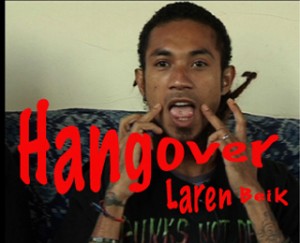Clinton Fernandes posted an Australian Coalition for Justice for East Timor.
—————-
No peace without justice in East Timor
Lindsay Murdoch
April 4, 2009
WE CONFRONTED the alleged mass killer as his men were hosing blood off his balcony. Leoneto Martins angrily denied that any massacre had taken place in the East Timorese town where he was the Indonesian-appointed mayor.
No Peace Without Justice in East Timor
Five people had died in clashes between rival groups, he said, before suggesting it might not be safe for myself and three other journalists to remain any longer in Liquica, a seaside town of 55,000 people 30 kilometres west of the capital, Dili.
We suspected Martins was lying.
Shops and markets were closed and the usually busy streets were largely deserted, except for groups of menacing-looking men wearing bandannas and ribbons in the red and white of the Indonesian flag.
Wide-eyed, trembling terror showing in the faces of women searching for family members confirmed something terrible had happened here.
But we didn’t know on that stifling hot April morning the extent and brutality of the violence at the town’s quaint Sao Joao Brito Church, the first of a series of massacres and attacks across East Timor that left about 1500 people dead and thousands more raped, maimed and wounded.
Worshippers in many Catholic churches across Australia were asked to observe a minute’s silence last weekend to mark the 10th anniversary on Monday of what the world came to know as the Liquica massacre.
Eurico Guterres, one of its alleged organisers, will spend the anniversary campaigning across the border in Indonesian West Timor to be elected a member of Indonesia’s national parliament.
Former general Wiranto, the man who was in charge of the military that inflicted terror across East Timor that year, will be campaigning to be elected Indonesia’s next president.
But in East Timor, 10 years has not dimmed the memories or fervour.
“When I speak with the victims, the one thing they ask me is, ‘When will there be justice?”‘ says Christina Carrascalao, who works to help improve the lives of the survivors, many of them poor, illiterate farmers. “I tell them I can’t answer that.”
The then church priest in Liquica, Rafael dos Santos, has retold the story of the massacre many times, the horror of it etched in his memory.
“At first the police shot tear gas into the church. Then they fired periodically into the air. Brimob members (riot police) fired shots in the air. Brimob members shot at people in the church. The Brimob shooting into the air gave a chance for the Besi Merah Puti (pro-Indonesian militia) to enter the church grounds, then the BMP began to massacre the people with arrows and spears. The people hit by the tear gas ran outside with their eyes closed, then the BMP hacked them. The name of this is murder.”
Father Rafael was bustled away at gunpoint by an Indonesian soldier as people inside his house tried to grab his robes, touching them and shouting, “We are dying. We are dying.”
Attackers shot dead people cowering in the priest’s bedroom. When several teenagers hid in the crawl space between the ceiling and the zinc roof, troops climbed on the roof and shot downwards.
Witnesses said the killing continued as machete-swinging militiamen chased people running from the church to Martins’ house, 100 metres away. But there was no sanctuary there.
Numerous inquiries and investigations have put the Liquica death toll at between 30 and 100.
The most commonly accepted figure is 86, the worst massacre in East Timor since the indiscriminate killing at Dili’s Santa Cruz cemetery in 1991.
But only low to mid-level militiamen have been convicted over the massacre or any of the other atrocities committed in East Timor in 1999, with higher ranking personnel, including Indonesian military and police officers, beyond reach in Indonesia.
Martins was among 19 accused who stood trial for crimes against humanity at a tribunal in Jakarta that human rights groups described as a sham. All were eventually acquitted.
Guterres served two years of a 10-year sentence for crimes against humanity before being acquitted on appeal in 2008.
East Timor’s leaders Jose Ramos Horta, a 1996 Nobel laureate, and Xanana Gusmao, a former freedom fighter, oppose calls for an international war crimes tribunal, saying reconciliation is more important than new trials and warning of a possible backlash within elements of the Indonesian military and destabilisation of their country’s fledgling democracy.
Gusmao is scheduled to go to the church this weekend to mark the anniversary. He will not receive the hero’s welcome he did in 1999 when he returned to East Timor after spending six years in a Jakarta jail.
Clinton Fernandes, a former Australian intelligence officer who was reporting on East Timor in 1999, says most…




















